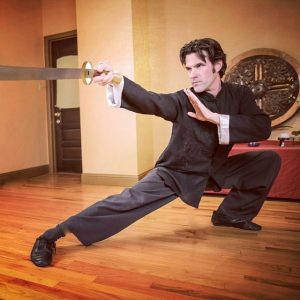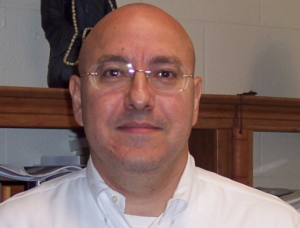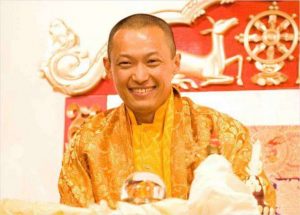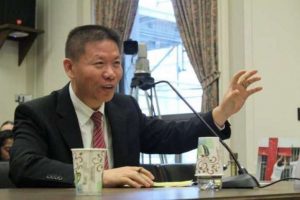
Have you ever felt that your practice isn’t moving anywhere? Or have you asked yourself why, after so many years of teachings and initiations from renowned lamas, you haven’t progressed more? If your answer is yes, you are not alone.
Serkong Tsenshap Rinpoche has held many roles in previous lives, including working as an assistant tutor to His Holiness the Dalai Lama and allegedly serving as an inspiration for the Star Wars character Yoda. However, his present incarnation often works with students who live outside traditional monastic settings. These students often come to him struggling to connect with the Dharma in everyday life, despite their dedication to practice.
Rinpoche, together with his teacher Ven. Tenzin Gyurmi, and Atisha Mathur, another experienced teacher, has created a four-year program specifically for serious practitioners who want to “discover what the teaching really means and how to put it into effect.” (Serkong Institute) They utilize the essence of traditional resources to serve the needs of 21st century Buddhists. Each year the institute will offer a two-and-a-half-month program in the picturesque environment of Thosamling Nunnery in Dharamsala, India.
Recently, I had the opportunity to interview Rinpoche about the program, what makes it unique, and, most importantly, the purpose behind his wish to benefit contemporary practitioners in this way.
BDG: What does it mean to be a 21st century Buddhist?
Serkong Tsenshap Rinpoche: I think His Holiness [the Dalai Lama] made it quite clear that a person who gives Buddhist teachings needs to understand how people’s minds work, because centuries ago people had a different way of accepting religion. Now, in the 21st century, people have a different taste toward religion. Now, Buddhism has to work, not only as a religion but in bringing together all of the benefits from science, from Buddhist logic, reasoning and philosophy, and at the end, for a person who really wants liberation and omniscience, there is another part for that, but don’t mix these things up.
When His Holiness talks about secular ethics and the teachings of the Buddha, he classifies them into three categories: Buddhist science, Buddhist philosophy, and Buddhism as a religion. Regarding the first two, whether one believes in religion or not, these teachings can be given to others. This means that in order to educate others, first you need to apply that to yourself and see how this affects your day-to-day life, not as a Buddhist, but as a human being, without mixing in religion or faith. Then you share it with others.
BDG: For which of the three categories are you making this program?
STR: This upcoming program is for serious Buddhist practitioners. What is lacking for many practitioners is that they cannot connect the teachings with everyday life. They learn something, they debate, but it is difficult for them to apply this in practice. My teacher has a very special vision about how to establish this connection. In order to do so, we start with logic and reasoning, so you need that education. Then my teacher, me, and Atisha will help you guys understand that.
BDG: In the old times, the texts were short and realizations quick. Then the commentaries became longer, while it takes us longer to attain realizations. Nevertheless, in contemporary times, everybody wants to become enlightened very quickly. How can we make our minds sharper to better get to the essence?
STR: Sometimes we tend to be faster, but the most important thing is that while doing that you never ask yourselves: am I on the right track or not? Somehow we don’t ask this question, but still go to all the teachings and initiations, including tantric teachings. Yet, regardless of how many initiations we have received, we still haven’t moved an inch. The problem is not in the method, the most important question is: why do you really want to become enlightened? If you cannot answer that, then no matter how many other materials you find, it doesn’t work, it doesn’t help.
Disciples at the time of the Buddha were incredibly eager to receive these teachings because they had a deep understanding of their value. They understood that each and every effort that a teacher or a student makes, everything counts. But in our generation they like the way enlightenment sounds, yet they don’t ask themselves, “What is enlightenment? What will I get if I am enlightened?” Now this is more like if you are doing something and a hundred people follow by doing the same thing, while what you are looking for doesn’t matter.
I think that at the time of the Buddha people were not like this. They were more like: “If he is going that way, I need to really research whether or not I should do the same thing. What is there for me?” In this period of time it is not like this, so I think that there is a huge problem.
BDG: When is one ready for the highest teachings?
STR: Are you talking about tantra?
BDG: Tantra, Mahamudra, Dzogchen, and so on.
As I have mentioned many times, all of these teachings, like dzogya chenpo, chagya chenpo, and so on, are designed to gain us liberation. If we do not first understand what liberation is, then the big names like Mahamudra, tantra, and Dzogchen are not going to help us much. Once you understand what liberation is and feel that you really need it “at any cost, no matter how much effort it will take, I will do whatever I need to do, even if I have to die for it, I can do it.” With this kind of strong faith or desire to obtain liberation, you can receive all other teachings, such as Dzogchen, Mahamudra, and everything else. Then they will help you to attain enlightenment much faster.
You also need to be ready, because Dzogchen teachings are not designed for beginners. They are designed for a person who has already a strong faith in a lama, that they will see the lama as Vajradhara himself. Then, when a person has this type of faith, the lama will give those teachings to a student who will then be able to take it.
Now many teachers give these types of teachings and initiations, students take them, but life remains the same as before. One can receive the highest initiation from His Holiness, but it doesn’t move an inch in our life. Not because anything is wrong with the teachings; it’s about whether we are ready and whether we have the right mental attitude.
BDG: There are so many courses, teachings, initiations, and retreats available in the Buddhist marketplace that one can always follow one’s wishes without coming out of our own cocoon. Why does one need to learn various aspects of the path?
STR: One needs to find out what is necessary, not what one likes. If one sees that the practice of tantra or something else is very important, while sutra is not that necessary, one needs to be able to answer why this is so. It’s not enough to say, “I wanted to do it.” This is how we end up in samsara. The person has to answer the question why they necessarily need it. “Oh, I feel so good” is also not the answer. The answer is that genuine tantric practitioners have a strong push of bodhicitta, feeling that they cannot wait a second to help all sentient beings, they really need it. Otherwise, even if you try a thousand times, even if pratyekabuddhas try, it doesn’t work. So many arhats tried to do so, but it doesn’t work for them so forget about it.
If you are asking [about] the door of tantric practice, [it is] bodhicitta, the wish to become enlightened for [the benefit of] sentient beings, not for oneself. You have to definitely ask yourself whether or not you have this.
It’s the same when you want to meditate but don’t want to study. If a person meditates without studying and their meditation is going very well, it’s ok. We need to answer what kind of meditation will really help us. It’s not powerful to sit for six or seven hours without thinking. That doesn’t count as shamatha. Shamatha is a tool that helps vipashyana, so when we use our intelligence and investigate, this becomes much more powerful and consequently wisdom becomes stronger—then shamatha is good.
Otherwise it’s like flies sitting at the corner of the house for three, four days doing nothing, it’s the same type of thing. It has the same name, but it’s like in India, where there is a place called Italian Pizza, but you can’t find Italian pizza there.
BDG: There are so many people who are skeptical of debate and yet you have built the basis of your program on debate. Can you explain why?
STR: One benefit of debating is that your concentration level grows stronger. Normally, when we have a big fight, our concentration becomes quite strong, but when we talk about Dharma, it’s not strong. When you use this in a debate, focus becomes strong also in the Dharma. This is how it is designed. We sit there like in a court. In a courtroom, a lawyer will ask you one specific question and you have to answer yes or no. So, when you have to say yes or no, you have to be 100 per cent careful. Each and every thing coming from your mind and mouth counts. You also have to think about what another person is going to say—maybe he is going to say this, so I have to say that before, it’s really challenging. This way you become quite skillful.
The most important thing is to debate with oneself. Up to now you haven’t asked any direct question to yourself. When you debate with your own ignorance, oh, it has so much to say to you. Also, when you meditate, all kinds of things can appear and you can stop mental chatter right away, because you have a solid answer for this.
When you become good at answering through the training in debate, even if a skillful person comes to you and debates you, if you give a solid reason, it stops their questioning and then we say, “Oh, I have won the debate.” Something can appear and you have so many doubts, now you can cut through the doubt. Meditation without doubts is perfect meditation. With the shadow of doubt, meditation cannot be perfect.
See more
Serkong Institute
Serkong Rinpoche’s Life and Personality (Study Buddhism)
His Holiness the 14th Dalai Lama of Tibet
Related features from BDG
Beyond Binaries: Prof. Klaus-Dieter Mathes’ Non-Dual Legacy
Buddhistdoor View: The Path to Authenticity in Modern Buddhism
100-day Mahamudra Transmission at Palpung Sherabling: The Silent and Far Reaching Call of the Ultimate
Related news reports from BDG
Nuns in Dharamsala Participate in Winter Debate before the Dalai Lama
Online Dharma: Tergar Announces “Introduction to the Mahamudra Path” Live Webinar














